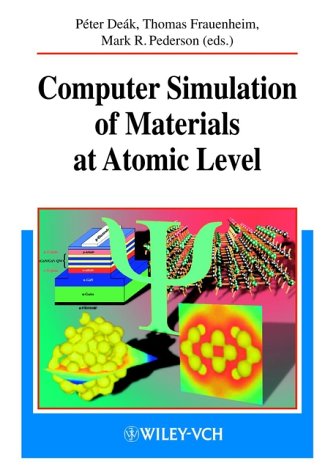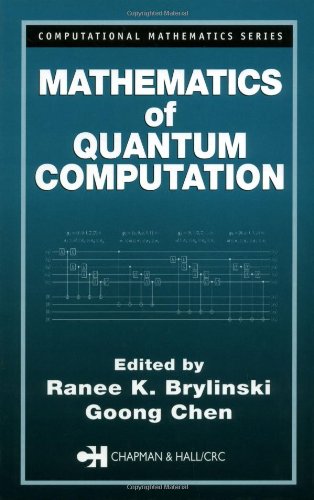G. Grimvall0444827943, 9780444827944, 9780080542867
Recent research has focussed on new materials made through “molecular engineering”, and computational materials science through ab initio electron structure calculations. Another trend is the ever growing interdisciplinary aspect of both basic and applied materials science. There is an obvious need for reviews that link well established results to the modern approaches. One purpose of this book is to provide such an overview in a specific field of materials science, namely thermophysical phenomena that are intimately connected with the lattice vibrations of solids. This includes, e.g., elastic properties and electrical and thermal transport.
Furthermore, this book attempts to present the results in such a form that the reader can clearly see their domain of applicability, for instance if and how they depend on crystal structure, defects, applied pressure, crystal anisotropy etc. The level and presentation is such that the results can be immediately used in research.
Graduate students in condensed matter physics, metallurgy, inorganic chemistry or geophysical materials will benefit from this book as will theoretical physicists and scientists in industrial research laboratories.
Table of contents :
Thermophysical Properties of Materials Enlarged and Revised Edition……Page 4
Copyright Page……Page 5
Preface……Page 6
List of most important symbols……Page 8
Contents……Page 12
1. Introduction……Page 22
2. Bonding and bulk modulus……Page 23
3. Cohesive-related energies……Page 25
4. Simple models of cohesive properties……Page 28
2. General thermodynamic relations……Page 39
3. Vacancies……Page 43
4. Divacancies and vacancy clusters……Page 45
5. Interactions between point defects and other defects……Page 46
1. Introduction……Page 48
2. General considerations……Page 49
3. Fundamental definitions of elastic constants……Page 51
4. Higher-order elastic constants……Page 53
5. Hooke’s law in isotropic and homogeneous polycrystalline materials……Page 54
6. Hooke’s law in single crystals with cubic symmetry……Page 55
7. Hooke’s law in single crystals of non-cubic symmetry……Page 60
8. Elastic anisotropy in single crystals……Page 62
1. Introduction……Page 67
2. Stability requirements……Page 68
3. Bain paths and lattice instabilities……Page 69
4. Cauchy relations and central interatomic forces……Page 71
5. Ranges for elastic constants in real materials……Page 72
6. Pressure dependence of elastic constants……Page 75
7. Volume dependence of elastic constants……Page 76
8. Temperature dependence of elastic constants……Page 78
9. Dependence on lattice structure and order……Page 82
10. Influence of solute atoms……Page 84
11. Band structure effects in metallic alloys……Page 86
12. Effect of dislocations and grain boundaries……Page 87
13. Dependence on magnetic state and magnetic fields……Page 89
2. Formulation of the secular equation……Page 91
4. Secular equation for isotropic polycrystalline materials……Page 93
5. Secular equation for cubic symmetry……Page 94
6. Secular equation for hexagonal symmetry……Page 96
7. Phase and group velocity……Page 97
8. Energy transport by sound waves……Page 98
1. Introduction……Page 100
2. Phonon dispersion curves……Page 102
3. Phonon density of states……Page 103
4. Debye spectrum……Page 105
5. Frequency moment representations of F(ω)……Page 110
6. Moment frequencies expressed as equivalent Debye temperatures……Page 113
7. Representing experimental data by Debye models……Page 115
8. Debye temperatures as functions of temperature……Page 118
9. F(ω) from the inverted heat capacity……Page 122
10. Comparison between Einstein and Debye models……Page 123
11. Other few-parameter models for F(ω)……Page 124
12. Structure dependence of F(ω) and Debye temperatures……Page 126
13. Lattice instabilities……Page 128
14. Amorphous systems……Page 130
15. Effect of order-disorder transitions……Page 131
16. Effect of magnetism and magnetic fields……Page 132
1. Introduction……Page 133
2. Thermal energy of phonons……Page 135
3. Entropy of phonons……Page 137
4. Heat capacity……Page 139
5. Thermal atomic displacements……Page 141
6. Temperature and pressure induced polymorphism……Page 150
1. Introduction……Page 157
2. Weakly perturbed harmonic vibrations……Page 158
3. The quasi-harmonic approximation and phonon Grüneisen parameters……Page 159
4. Explicit anharmonicity……Page 165
5. Thermodynamic functions in anharmonic systems……Page 169
6. Thermodynamic functions related to frequency shifts……Page 171
7. Factors influencing the Grüneisen parameter……Page 173
2. General aspects……Page 174
3. Surfaces……Page 176
4. Point imperfections……Page 179
5. Concentrated alloys and mixed crystals……Page 183
6. Vacancies……Page 185
8. Grain boundaries……Page 187
1 . Introduction……Page 188
2 . Thermodynamic Functions……Page 189
3. Electronic entropy and heat capacity in real metals……Page 194
4 . Electron density of states in real metals……Page 200
2 . Systems with few energy levels……Page 203
3 . Heat capacity from vacancies……Page 204
4 . Crystal-field split electron levels in atoms……Page 205
5 . Tunneling states in amorphous materials……Page 206
6 . Order-disorder transformations……Page 207
7 . Magnons……Page 208
1 . Introduction……Page 213
2 . Entropy of fusion……Page 214
3 . Liquid heat capacity……Page 217
4 . More on lattice instabilities……Page 218
1 . Introduction……Page 221
2 . Power series in pressure or volume……Page 222
3 . The Murnaghan equation of state……Page 224
4 . A universal binding energy relation……Page 225
6. Some important thermodynamic relations……Page 226
7. Thermodynamic properties reduced to fixed volume……Page 230
8. Thermal expansion in anisotropic solids……Page 233
9. Grüneisen parameters in non-cubic lattices……Page 235
1. Introduction……Page 240
2. General relations……Page 241
3. Microscopic models for thermal expansion……Page 242
4. Phonon contribution to the thermal expansion……Page 243
5. Electronic contribution to the thermal expansion……Page 248
6. Magnetic contribution to the thermal expansion……Page 250
7. Vacancy contribution to the thermal expansion……Page 252
8. Negative thermal expansion……Page 253
9. Invar-type systems……Page 254
11. Dependence on lattice structure and defects……Page 255
12. Coupled thermal conduction and expansion……Page 256
1. Introduction……Page 258
2. General formulae for the electrical conductivity……Page 260
3. Relations of the type σ = ne2τ/m……Page 261
4. Solutions to the Boltzmann equation……Page 262
5. Phonon-limited electrical conductivity……Page 265
6. Electrical conduction in non-cubic lattices……Page 269
7. Matthiessen’s rule……Page 270
8. Concentrated alloys……Page 271
9. Electron mean free path and size effects……Page 272
10. Pressure dependence……Page 273
11. Saturation effects……Page 274
1. Introduction……Page 276
2. Macroscopic relations……Page 277
3. Lattice thermal conductivity: general aspects……Page 280
4. The Boltzmann equation for phonon transport……Page 283
5. Lattice conductivity limited by anharmonic effects……Page 285
6. Defect-limited lattice conductivity……Page 291
7. Electronic contribution to the thermal conductivity……Page 297
8. Miscellaneous transport mechanisms……Page 303
10. Mean free paths and saturation phenomena……Page 304
1. Introduction……Page 307
2. Rigorous bounds……Page 309
3. Dilute suspensions……Page 317
4. Weakly inhomogeneous material……Page 325
5. Effective-medium theories……Page 327
6. Exact results in certain geometries……Page 331
7. Percolation……Page 333
8. Phase-boundary effects……Page 334
9. Resistivity versus conductivity……Page 335
1. Introduction……Page 337
2. Conductivity properties of quasi-isotropic polycrystalline materials……Page 338
3. Elastic properties of quasi-isotropic polycrystalline one-phase materials……Page 341
4. Thermal expansion of quasi-isotropic polycrystalline one-phase materials……Page 347
5. Anisotropic particles in an isotropic matrix……Page 348
6. Oriented phases……Page 350
1. Introduction……Page 352
2. Rules related to atomic volumes……Page 353
3. Bounds to vibrational properties……Page 356
4. Latimer’s rule for standard entropies……Page 357
5. The Neumann–Kopp rule for Cp……Page 359
6. The Lindemann melting criterion……Page 360
7. Defect energies related to the melting temperature……Page 361
8. Effective force constants……Page 363
9. Hardness……Page 365
10. Correlations explained by dimensional analysis……Page 366
11. Relation between CP(T), β(T) and ρ(T)……Page 368
12. Probing electron states near the Fermi level……Page 369
Appendix A. Buckingham’s Π-theorem……Page 374
Appendix B. Some relations for electron states……Page 377
Appendix C. The dynamical matrix……Page 381
Appendix D. Some relations for harmonic lattice vibrations……Page 383
Appendix E. Some relations for anharmonic lattice vibrations……Page 386
Appendix F. Heat capacity contributions in a real solid—an overview……Page 388
Appendix G. Some relations for inhomogeneous systems……Page 390
Appendix H. Units……Page 391
Appendix I. Tables of Debye temperatures and λel-ph……Page 393
References……Page 398
Author index……Page 418
Subject index……Page 430
Materials index……Page 442







Reviews
There are no reviews yet.